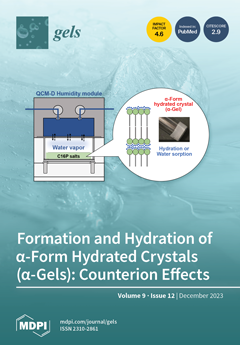The properties of faba bean (
Vicia faba L.) protein isolate (FPI) gels depend on their starting protein material and can be modulated by the addition of polysaccharides. In order to investigate the interplay between these two factors, commercial FPI (FPI
1)
[...] Read more.
The properties of faba bean (
Vicia faba L.) protein isolate (FPI) gels depend on their starting protein material and can be modulated by the addition of polysaccharides. In order to investigate the interplay between these two factors, commercial FPI (FPI
1) and FPI prepared in-house (FPI
2) were used to fabricate glucono-delta-lactone-induced gels, with or without dextran (DX) addition. FPI
1 exhibited lower solubility in water and a larger mean particle size, likely because it experienced extensive degradation due to the intense conditions involved in its preparation. The FPI
1 gel showed a similar water-holding capacity as the FPI
2 gel; however, its hardness was lower and viscoelasticity was higher. After DX addition, the hardness of both FPI gels decreased, while their water-holding capacity increased. Interestingly, DX addition decreased the viscoelasticity of the FPI
1 gel but enhanced the viscoelasticity of the FPI
2 gel. The microstructural analysis demonstrated that the density of the aggregation network decreased in the FPI
1 gel after DX addition but increased in the FPI
2 gel. This was consistent with the changes observed in the dominant protein interaction forces in these gels after DX addition. Overall, these findings have the potential to guide ingredient selection for the tailored preparation of FPI gels.
Full article






